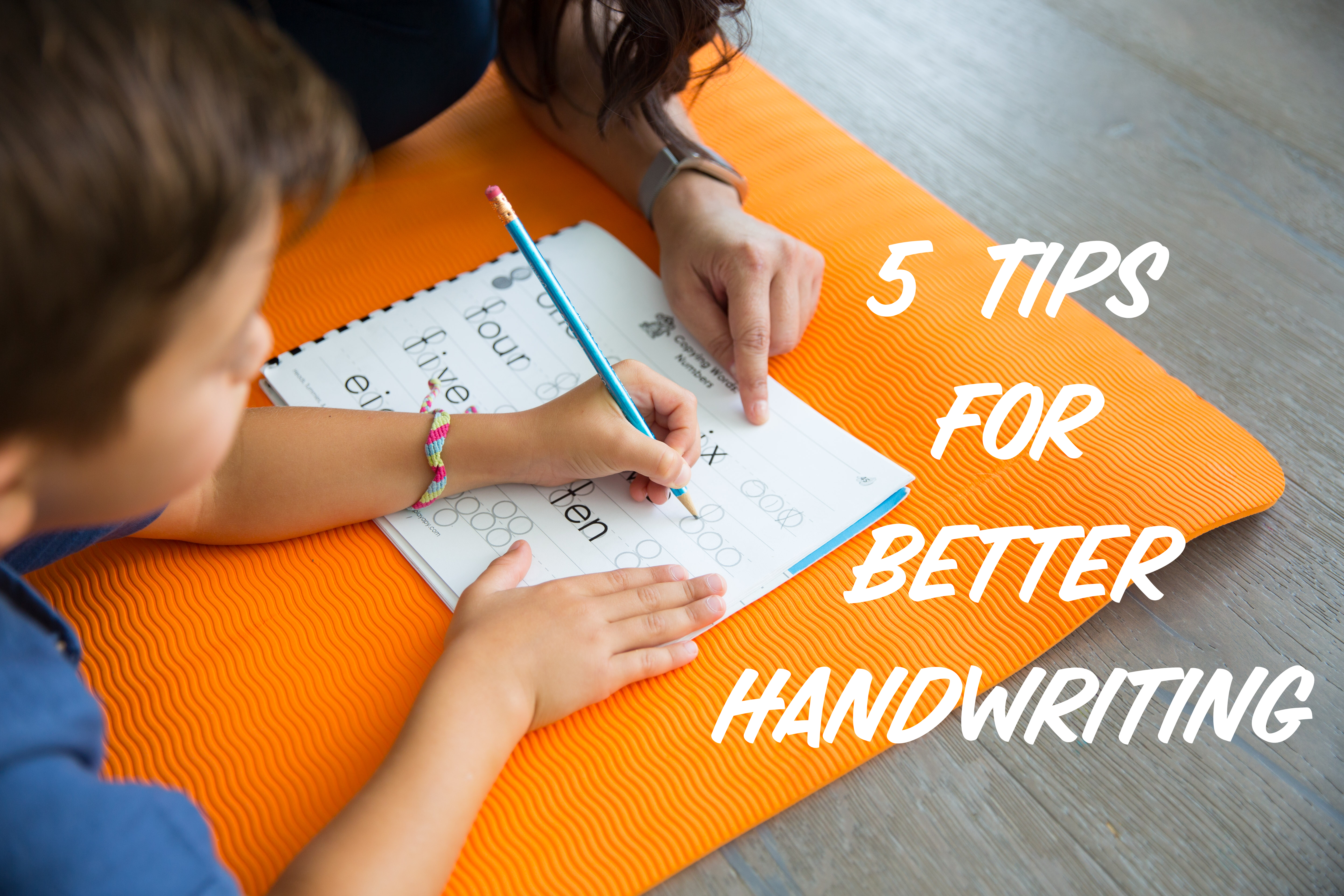
31 Jul 5 Tips for Better Handwriting
Every day kids are spending less time holding a pencil or crayon and more time manipulating tech gadgets. This can lead to immature handwriting skills that can impede on academic skills and daily living skills like tying shoelaces or even opening a water bottle. Parents are seeking ways to help their children become more successful and independent. Here are 5 simple tips to help your child with handwriting today.
Use a Pencil Grip
Pencil grips are an inexpensive solution to help a child that demonstrates an immature grasp of a pencil. There are many options, but often children with weaker hands tend to avoid using the thumb, which should be the strongest contributor. Pencil grips like the one pictured can provide stability for the 3 fingers primarily used to create the most efficient grasp known as the tripod. Click here to purchase the pencil grip I recommend most.
Use 3-lined Paper
Something as simple as using lined paper can be helpful. It is important to make sure that it has a middle line to give more guidance to a child. It is also important to consider the amount of space between lines. Often times schools suggest composition notebooks to very young children, which can create more confusion and difficulty for new learners. Using 3-lined paper gives a child a visual reference when forming the alphabet especially lowercase letters that often start on the middle line.
Write Lying on the Floor
I often recommend writing while lying on the floor. This may seem strange, but it helps to ground the body and often calm a child that may find it difficult to sit in a chair. It also gives the forearm and wrist somewhere to rest. This helps to encourage use of the hand muscles and discourages use of the shoulder or wrist while also strengthening them.
Practice Hand Strengthening Exercises
Children that have difficulty with handwriting often do because of decreased strength in their tiny hand muscles. Just like with other parts of the body, exercise the small muscles of the hand can increase the strength and improve the function. Sometimes something as simple as using broken crayons can help. Here is a list of hand strengthening activities you can try.
Use Action Words
One of the tips that I find the most powerful when helping with handwriting is using action words. This means that I use words to explain how to form letters so that a child understands how parts can make a whole. The PALS Handwriting Program published by Playapy uses action words to help a parent guide a child in forming both uppercase and lowercase letters. Here you can view before and after photos to see how using action words have helped others.
I hope you find these tips for handwriting helpful. Remember to consult with your pediatrician for a prescription to see an occupational therapist if you need more help with your concerns. You can also contact Playapy for Parent Coaching sessions. Have a playful day!
Amy Baez, MOT, OTR/L
Amy Baez is the Founder of Playapy and Creator of the PALS Handwriting Program. She is a pediatric occupational therapist, speaker, and parent coach with 19 years of experience. Learn more at www.amybaez.com.
